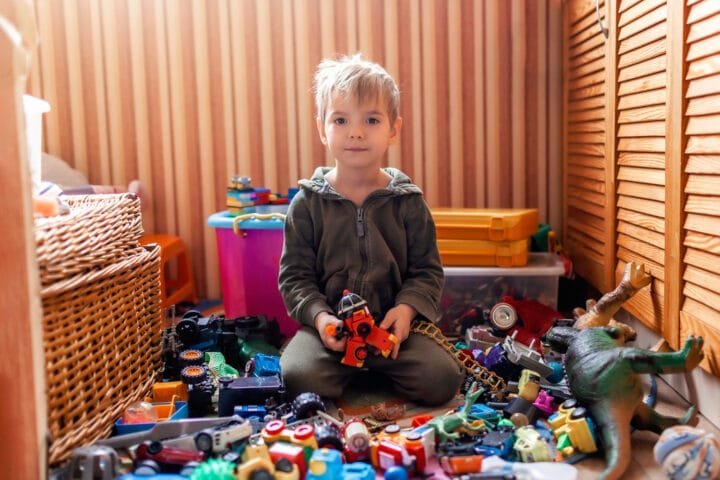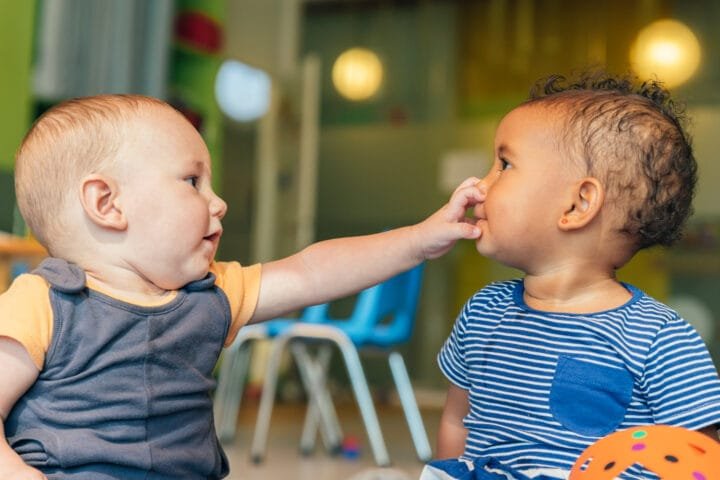Co-Parenting Like a Pro: Transforming Disorder into Harmony
Hey there! Let’s embark on the incredible journey of creating a harmonious and joyful family atmosphere through co-parenting. While co-parenting may have challenges, let’s tackle them confidently and positively! I’m happy to share my personal journey with you, including the victories and the challenges. I’ll also provide valuable tips to help you build connections instead of obstacles.
Establishing the Basis: Grasping Co-Parenting
It takes two to tango, and co-parenting is no exception. When I started, I believed co-parenting meant dividing time between our children. Oh, how inexperienced I was! Effective co-parenting involves:
- Coming together as a team.
- Respecting each other.
- Prioritizing the child’s best interests.
Co-parenting efforts have resulted in children who have greater self-esteem, academic achievement, and social abilities. Research from the American Psychological Association indicates that children with actively involved fathers, whether through co-parenting or marriage, tend to perform better academically and cognitively.
Let’s delve into what we’ve found crucial:
- Communication is Vital: From the start, I realized that effective communication is the foundation of co-parenting. In my experience, unclear texts and assumptions can lead to disaster. It was similar to talking over a megaphone instead of whispering in the dark—we used apps such as ‘OurFamilyWizard’ to keep everything organized and clear. As a result of these digital tools, nothing slipped through the cracks, and conflict was reduced.
- Shared Goals and Values: We have built a sturdy bridge across a turbulent river by sharing the same core values and long-term goals for our child’s upbringing. As a co-parenting couple, we shared values like honesty, compassion, and education. Our efforts remained aligned even when emotions ran high due to creating this “parenting manifesto.”
- My personal story: Things felt a bit tense at the start of our conversation. However, when we shifted our focus to what really matters – our son’s future – the atmosphere became much more peaceful. Instead of conflicting, we started exchanging ideas and working together. Rather than opponents, we turned into allies on a joint quest.
Setting and Maintaining Co-Parenting Boundaries
Creating boundaries was more than just helpful. It was a game-changer. Here are some of the most important boundaries that were beneficial to us:
- Define Personal Boundaries: I’ve learned that having high expectations is essential. Talking about parenting should be approached professionally, like managing a small-scale business where emotions must be considered in meetings. Setting specific times for discussions has been really helpful. Think that it was “office hours” for co-parents. Being aware of when and how to speak kept from encroaching on private time and lowered tension that was not needed.
- Respect for Each Other’s Time: It was vital for us to stick to our visiting times. It was like our special agreement, ensuring we had dedicated time for each other and planned everything out. When I was explaining this to one of my friends, I compared it to a train schedule, you know, something that’s reliable and on time. It’s crucial for things to run smoothly. Research also shows that kids do well with a regular routine and knowing what to expect.
- Boundaries in New Relationships: It was easy, but this one was tricky! Inviting new partners to be part of the process is like taking a dip in a cold water pool slowly and carefully to avoid excessive shock. We agreed on a timeline for introducing our new partners, making sure they did not go overboard as supporting figures. Again, the “long game” took precedence; the dynamic gets promoted if there’s a ring. According to a Journal of Divorce & Remarriage study, children adjust better when new partners are introduced slowly and with clear communication about roles.
- Utilization of Tech Tools: Utilizing technology kept emotions at bay and communication streamlined. Apps like “2houses” and “OurFamilyWizard” were more than just tools to us. They were like digital assistants, helping us keep our conversations organized. These apps were essential for maintaining peace by allowing us to share calendars, expense reports, and even mood text messages. Many parents report that such applications reduce conflict by providing clear records of agreements and communications, which is crucial in high-conflict situations.
The Benefits of Co-Parenting Therapy
Our journey with co-parenting therapy was transformational. Initially, the treatment seemed daunting, like entering uncharted waters with unknown depths. But let me share how invaluable this path has become:
Discussions on Neutral Ground:
The discussion provided a safe space to share our thoughts without fear of criticism. It was an open and neutral platform where differing opinions could lead to constructive conversations. Bringing in a neutral third party, such as a therapist, can significantly reduce the frequency and intensity of conflicts, as shown by a study that found a decrease of over 50 percent.
- Developing Essential Skills: We learned how to listen effectively and resolve conflicts during therapy. The journey to decode our silent expectations and address them head-on felt like walking through a minefield at first. Once we stopped assuming and started listening, we often realized frustrations could be transformed into understanding.
- A focus on healing: The real magic: therapy helped us confront and put our past grievances behind us so we could move forward instead. Through each session, we healed old wounds and concentrated on creating a positive co-parenting atmosphere. Using studies, we found that guided interventions in family therapy improve communication patterns and reduce children’s emotional distress.
Therapy was a hero in silence. It was similar to having a guide on the sometimes dangerous hike that prevented us from straying into the treacherous paths of resentment and blame. The guidelines gave us clarity and helped create an environment of cooperation.
Navigating High-Conflict Co-Parenting
Dealing with a difficult situation can sometimes feel like sailing through stormy waters. However, we can eventually reach calmer seas with determination and a solid plan. Here’s how we managed to navigate through the tough times:
- Child-Centric Approach: Always keeping our child’s needs at the forefront proved pivotal. This mindset guided our decision-making process, acting as a North Star in turbulent times. Whenever a decision loomed, shifting our perspective to ask, “What’s best for our child?” simplified even the most daunting choices. Research shows that focusing on the child’s well-being reduces conflict and promotes cooperation.
- Parallel Parenting as a Strategy: When communication became gridlocked, parallel parenting offered a reprieve. It allowed us to maintain distinct routines without constant disputes. Picture two parallel roads, each with a unique landscape but heading toward the same destination—our child’s happiness. Studies validate that parallel parenting reduces communication-related stress and helps in cases where high conflict makes traditional co-parenting challenging.
- Identifying and Avoiding Triggers: We always kept our children’s needs as our top priority, and it really made a difference. Whenever we had to decide, we asked ourselves, “What’s best for our child?” This approach helped us make choices and navigate through tough times with ease. Research indicates that focusing on the child’s well-being reduces conflict and encourages cooperation.
Personal Anecdote: It was the moment I realized that paying attention to our son’s emotional reactions helped us have better discussions. In understanding the triggers for adverse reactions, we modified our approach, which led to more positive outcomes. The realization was the turning point in our relationship, changing our relationship into a harmonious relationship.
Special Considerations for Co-Parenting Infants
Co-parenting infants was a susceptible task, demanding an enhanced approach. Here’s how we met the challenge head-on:
- Routine Synchronization: Infants, we discovered, are creatures of habit. Getting our two homes on the same page with routines was like solving a puzzle. Once we did it, our child was so much happier and calmer. It made a big difference for our child and made going between home and school much smoother. Research from Pediatrics shows that regular routines are essential for kids to grow and fit socially.
- Tracking Milestones Together: Remembering and celebrating milestones helped us stay close, even when we were far apart. Using apps to capture all those “firsts” was like creating a digital scrapbook that let us share in those special moments. Sharing our milestones felt less like a duty and more like sharing exciting updates with each other. Studies have shown that shared parenting moments enhance parental relations and promote healthy child development.
- Task Sharing: The division of parental responsibilities was less of a tug-of-war and more like a synchronized dance, where each partner knew their step. While one handled midnight duties, the other managed morning routines—a well-orchestrated balance with our child’s well-being at the heart.
Personal Insight: I have found that the synchronization of stories and songs between the homes offered comfort to our child. Isn’t it amazing how these small family rituals can comfort and ground our child in ever-changing surroundings, emphasizing the significance of stability?
Final Reflections: My Journey to Harmonious Co-Parenting
Reflecting on this experience, I see that effective parenting is about constructive collaboration, not just coexistence. Through all of it, patience, understanding, and unwavering devotion have helped create an environment that is nurturing for our children and ourselves. The change was reciprocal; our son observes his parents’ lyrical dancing and mimics it, managing interactions with the same grace that he’s seen us struggle to develop.
Co-parenting can be tricky sometimes, but it offers plenty of chances to learn and show respect. It’s a responsibility and an ongoing effort to ensure our kids are brought up in a safe and loving environment. With patience and empathy, I can say that our experience hasn’t been about perfection but evolving and improving.
Recommended Books on Co-Parenting
To navigate the challenges of co-parenting effectively, consider these insightful books that offer valuable strategies and support:
- Co-Parenting Works!: Helping Your Children Thrive after Divorce by Tammy Daughtry
- This book offers practical advice and tools for divorced parents to create a successful co-parenting environment. It focuses on helping children thrive by maintaining a supportive and stable parenting relationship, even after separation.
- The Co-Parenting Handbook: Raising Well-Adjusted and Resilient Kids by Karen Bonnell and Kristin Little
- A comprehensive guide designed to help parents collaborate effectively while raising their kids in two homes. It includes tips for building strong and respectful communication, managing emotional challenges, and fostering resiliency in children.
- Two Homes, One Childhood: A Parenting Plan to Last a Lifetime by Robert E. Emery, Ph.D.
- This book provides a framework for creating a stable and loving environment across two households. It focuses on long-term planning and consistency to ensure that children feel secure and supported throughout their upbringing.
- Joint Custody with a Jerk: Raising a Child with an Uncooperative Ex by Julie A. Ross and Judy Corcoran
- Geared towards parents dealing with a difficult co-parenting dynamic, this book offers strategies for improving communication and navigating conflict, helping to minimize stress and frustration for both parents and children.
- The Co-Parents’ Handbook: Raising Well-Adjusted, Resilient, and Resourceful Kids in a Two-Home Family from Little Ones to Young Adults by Karen Bonnell and Patricia L. Papernow
- This handbook provides practical advice for co-parents aiming to support their children’s development and emotional health while managing the logistics of living in two homes.
- Parenting Apart: How Separated and Divorced Parents Can Raise Happy and Secure Kids by Christina McGhee
- A detailed guide to understanding and addressing the emotional and psychological needs of children during and after a divorce, offering strategies for co-parents to work together effectively.
- The Parent’s Guide to Birdnesting: A Child-Centered Solution to Co-Parenting During Separation and Divorce by Ann Gold Buscho, Ph.D.
- This book introduces the concept of birdnesting, where children remain in the family home while the parents rotate in and out. It provides practical advice on how to implement this child-centered approach.
- Divorce Poison: How to Protect Your Family from Bad-mouthing and Brainwashing by Dr. Richard A. Warshak
- Dr. Warshak’s book addresses the harmful effects of parental alienation and offers strategies to protect children from negative influences and manipulation, ensuring they maintain healthy relationships with both parents.
- Mindful Co-parenting: A Child-Friendly Path through Divorce by Jeremy S. Gaies Psy.D. and James B. Morris Jr. Ph.D.
- This book advocates for a mindful approach to co-parenting during divorce, focusing on strategies that prioritize the emotional health and well-being of children, even amidst the challenges of separation.
FAQs
What is co-parenting?
What are some effective strategies for successful co-parenting?
How can I handle conflicts with my co-parent?
What should I do if my co-parent speaks negatively about me in front of our child?
How can I support my child during the co-parenting transition?
Related Posts










































































